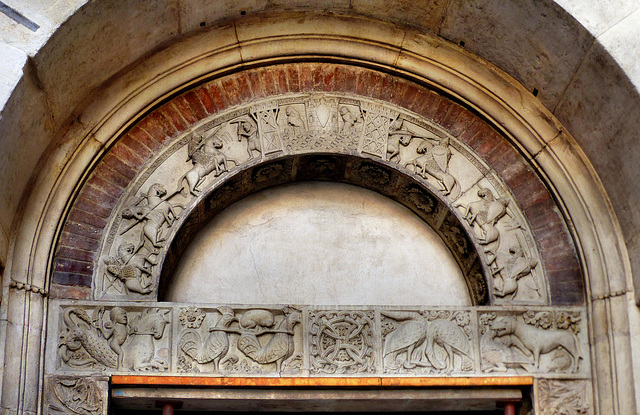Modena - Duomo di Modena
Modena - Duomo di Modena
Modena - Duomo di Modena
Modena - Duomo di Modena
Modena - Duomo di Modena
Modena - Duomo di Modena
Modena - Duomo di Modena
Modena - Duomo di Modena
Modena - Duomo di Modena
Modena - Duomo di Modena
Modena - Duomo di Modena
Modena - Duomo di Modena
Modena - Duomo di Modena
Modena - Duomo di Modena
Modena - Duomo di Modena
Modena - Duomo di Modena
Nonantola - Abbazia di Nonantola
Nonantola - Abbazia di Nonantola
Nonantola - Abbazia di Nonantola
Nonantola - Abbazia di Nonantola
Nonantola - Abbazia di Nonantola
Nonantola - Abbazia di Nonantola
Nonantola - Abbazia di Nonantola
Modena - Duomo di Modena
Modena - Duomo di Modena
Modena - Duomo di Modena
Modena - Duomo di Modena
Modena - Duomo di Modena
Modena - Duomo di Modena
Modena - Duomo di Modena
Modena - Duomo di Modena
Modena - Duomo di Modena
Modena - Palazzo Comunale
Modena - Telesforo Fini
Castello di Canossa
Castello di Rossena
Parma - Ufficio Postale
Parma - Duomo di Parma
Parma - Duomo di Parma
Parma - Duomo di Parma
Parma - Duomo di Parma
Parma - Duomo di Parma
Parma - Duomo di Parma
Parma - Duomo di Parma
Parma - Duomo di Parma
Location
See also...
Keywords
Authorizations, license
-
Visible by: Everyone -
All rights reserved
-
174 visits
Modena - Duomo di Modena


In the center of Modena, where the Duomo di Modena (aka "Cattedrale di Santa Maria Assunta e San Geminiano") is placed, churches have existed since the 5th century. After the burial site of Modena's patron Saint Geminianus, a former bishop (+397), was dicovered here, the existing cathedral seemed to small.
The first stone laying for the cathedral of today took place in May 1099, strongly supported by Matilde di Canossa (aka "Matilda of Tuscany"). First architect was Master Lanfranco, descibed as "maestro ingenio clarus [...] doctus et aptus".
The Duomo di Modena was consecrated in 1184, but the building process continued. It was finally completed in 1322.
Many renowned sculptors have worked here.
The "Porta della Pescheria", as well as side portal, opens to the north, where in mediavel times the fish-market was located.
The "Porta della Pescheria", as well as side portal, opens to the north, where in mediavel times the fish-market was located.
I learned that the archivolt depicts a scene from the Arthurian Legend. Older Welsh and Breton tales about Artur were written down in the "Historia Regum Britanniae" written by Geoffrey of Monmouth around 1136. This carving may be a little older. It is dated to 1130. Artus is the second on the left, the only one without a chainmail.
The lintel has other stories. To the left a young nude guy rided a hippocamus. The followig reliefs may relate to the French "Roman de Renart", written by Pierre de St. Cloud from 1174 on, based party on Aesop's fables. The artists probably knew as well the "Physiologus".
The first stone laying for the cathedral of today took place in May 1099, strongly supported by Matilde di Canossa (aka "Matilda of Tuscany"). First architect was Master Lanfranco, descibed as "maestro ingenio clarus [...] doctus et aptus".
The Duomo di Modena was consecrated in 1184, but the building process continued. It was finally completed in 1322.
Many renowned sculptors have worked here.
The "Porta della Pescheria", as well as side portal, opens to the north, where in mediavel times the fish-market was located.
The "Porta della Pescheria", as well as side portal, opens to the north, where in mediavel times the fish-market was located.
I learned that the archivolt depicts a scene from the Arthurian Legend. Older Welsh and Breton tales about Artur were written down in the "Historia Regum Britanniae" written by Geoffrey of Monmouth around 1136. This carving may be a little older. It is dated to 1130. Artus is the second on the left, the only one without a chainmail.
The lintel has other stories. To the left a young nude guy rided a hippocamus. The followig reliefs may relate to the French "Roman de Renart", written by Pierre de St. Cloud from 1174 on, based party on Aesop's fables. The artists probably knew as well the "Physiologus".
- Keyboard shortcuts:
Jump to top
RSS feed- Latest comments - Subscribe to the comment feeds of this photo
- ipernity © 2007-2024
- Help & Contact
|
Club news
|
About ipernity
|
History |
ipernity Club & Prices |
Guide of good conduct
Donate | Group guidelines | Privacy policy | Terms of use | Statutes | In memoria -
Facebook
Twitter

Sign-in to write a comment.